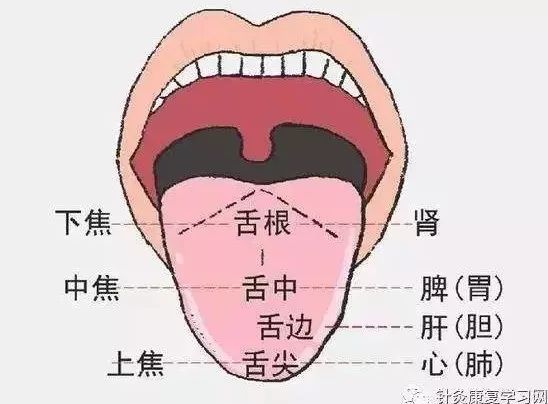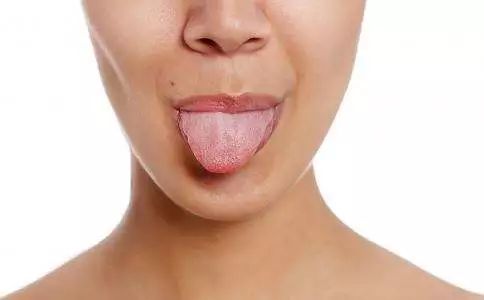The tongue, as one of the most flexible and multifunctional organs in the human body, not only allows us to produce varied tones but also helps us taste the sour, sweet, bitter, and spicy flavors of food. In Traditional Chinese Medicine (TCM), tongue diagnosis is a common diagnostic method within the “observational diagnosis” category.

“The tongue is the sprout of the heart, the exterior sign of the spleen, and the coating is produced by the stomach qi.”
According to TCM, observing the color of the tongue can reveal the nature of diseases and the balance of righteous qi; examining the tongue coating can differentiate the depth of pathogenic factors and the existence of stomach qi; further assessing its moisture and dryness can indicate changes in the six excess pathogenic factors and the consumption of body fluids.

By observing the color, shape, prickles, cracks, and flexibility of the tongue, one can uncover many hidden diseases within the body and understand one’s health status!
Tongue diagnosis primarily examines the tip, center, root, and sides of the tongue,

 What does a normal tongue look like?
What does a normal tongue look like?
A normal tongue should appear as follows: the tongue body is soft and flexible, with a light red color, and the surface is covered with a thin, evenly distributed, moderately moist white coating, often described as “light red tongue with thin white coating.”
 What are the abnormal manifestations of the tongue?
What are the abnormal manifestations of the tongue?
1. Enlarged tongue with tooth marks
An enlarged tongue is a common tongue shape that appears swollen and is often referred to as a “jade tongue”. Due to its size, the edges frequently rub against the teeth, leading to the appearance of tooth marks.

This tongue appearance is often associated with the retention of dampness, commonly linked to spleen and stomach deficiency or kidney yang deficiency.
Spleen and stomach deficiency often manifests as poor digestive function, weak gastrointestinal motility, and poor absorption;
Kidney yang deficiency is characterized by cold limbs, fear of cold, weakness in the lower back and knees, and abnormal excretion. This is commonly seen in individuals around 30 years old who are busy with work, have irregular lifestyles, and often stay up late or drink alcohol, leading to the retention of waste in the body;
Recommended foods: These individuals can consume more foods that strengthen the spleen and eliminate dampness, such as Fu Ling (Poria), Shan Yao (Chinese Yam), Da Zao (Jujube), and Shan Zha (Hawthorn).
Tongue color
1. White tongue body
A white tongue body is relatively common, presenting as a pale white tongue with little blood color, primarily indicating deficiency of qi and blood, with spleen deficiency being the most common, often manifesting as general weakness, a feeling of fullness in the stomach, and anemia, especially in women during menstruation;
Recommended foods: Dang Gui (Angelica Sinensis) chicken soup or red date black chicken soup.

2. Red tongue body
Red on the sides of the tongue: If there is not only dryness in the mouth but also bitterness, redness in the eyes, etc., it indicates excessive liver fire. When there is liver fire, the tongue body will appear red, with the sides being more pronounced.
Recommended herbal tea: for example, using Ku Ding Cha (Bitter Tea) with Ju Hua (Chrysanthemum) and Man Jing Zi (Vitex) to brew.
Red tip of the tongue: A red tongue, especially at the tip, primarily indicates heart fire rising, which may present with symptoms such as dryness of the mouth, irritability, sores on the tongue, poor sleep, yellow urine, and dry stools. One can drink water boiled with corn silk or use Calendula and Maogen (Phragmites).
If the front part of the tongue is red,accompanied by cough, dry nose, and dry throat, it generally indicates lung fire, requiring treatment to clear lung heat and relieve abdominal gas.

3. Purple tongue body
A tongue that appears dark purple, dull, and not moist, with a slight grayish tint.
This primarily indicates blood stasis and spleen-stomach damp-heat, often accompanied by symptoms such as dry mouth, bad breath, dry stools, short and red urine, irritability, and insomnia. Treatment should focus on clearing heat and resolving stasis.
Recommended foods include winter melon, cabbage, bitter melon, fresh vegetables, and mung bean soup, which are cooling and beneficial for dampness.
If the tongue body appearslight yellow-purple or greenish-purpleand moist, it indicates a cold yin condition; if the tip of the tongue shows cyanotic spots, it suggests the accumulation of blood stasis in the body.

Tongue coating
1. Yellow tongue coating
A yellow and greasy tongue coating indicates liver-spleen damp-heat, which can affect the rise and fall of the spleen and stomach and the secretion of bile, often manifesting as irritability, thirst, and bad breath.
Bad breath is caused by disharmony in the spleen and stomach, excessive stomach fire, and poor digestion; while bitterness in the mouth is due to disordered bile secretion.
Additionally, the liver opens to the eyes, and liver diseases often lead to dryness and reduced vision. One can take herbs that nourish yin, strengthen the spleen, and support the liver to regulate the spleen and liver.

2. Thick yellow tongue coating
This is also quite common; a thick yellow coating indicates damp-heat in the body, primarily seen in individuals who consume alcohol; of course, it may also indicate a heat syndrome, such as wind-heat cold.
If the tongue is red with a yellow coating and bad breath, it is often due to stomach heat, with symptoms such as stomach pain, bitterness in the mouth, and a preference for cold water.
3. Overly white, thick tongue coating
A healthy tongue surface should only have a thin white coating, allowing the tongue to be slightly visible underneath. However, if the coating is overly white, completely covering the tongue, it often indicates poor spleen and stomach function, leading to digestive issues, frequent diarrhea, and stomach pain.
Recommended foods include winter melon, Job’s tears, and Huai yam.
4. Black tongue coating
Black coatings can vary from brownish-black, grayish-black, to pitch black. TCM believes that a black tongue coating is caused by extreme heat transforming into fire.
Individuals with gastrointestinal issues are prone to cold dampness, leading to a thick coating that starts white and gradually turns yellow or black.
High emotional stress, frequent late nights, and excessive smoking can easily lead to black coatings; some chronic diseases, such as uremia and malignant tumors, may also present with black coatings during disease progression.
Additionally, consuming foods like mulberries, black plums, and black currants can also cause the tongue coating to turn black.

Tongue diagnosis: One of the most practical health skills
Tongue diagnosis is a very effective diagnostic method:
Tongue diagnosis is highly sensitive and can intuitively reflect our bodily conditions. Through the semi-transparent mucosa of the tongue, one can assess whether the blood in the body is abundant; by observing the thickness and color changes of the tongue coating, one can determine the state of dampness, cold, heat, and dryness within the body. Sometimes, tongue diagnosis can reveal bodily changes more clearly than pulse diagnosis.
Infant health check:
Young children often cannot express their discomfort well, so regularly checking their tongues is a good way to promptly understand their health status!
Complementing routine check-ups:
Routine check-ups are limited in frequency, and many indicators may not be detectable in the early stages of illness. However, every change in the body can be reflected on the tongue. Learning tongue diagnosis allows for timely problem detection and prevention!
Timely detection of health risks:
We cannot run to the hospital for every minor ailment, but we may worry about whether it is a “warning” of a health issue. By learning tongue diagnosis, you can check your body’s yin-yang balance and identify health risks at any time, allowing you to correct poor dietary and lifestyle habits to ensure health!
Disclaimer: This article is reproduced from the internet and published materials. If there is any infringement, please contact us for removal. The various prescriptions and remedies mentioned are for informational sharing only and do not constitute medical advice, recommendations, or guidance. Please use them under the guidance of a physician, and this platform does not bear any responsibility for any consequences arising therefrom!
Click “Like” + “Follow”
Let more people see it!

